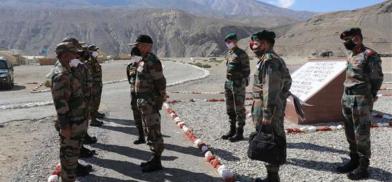Easing of India-China standoff: Can China be trusted?
China’s fresh illegal claims on Bhutanese territory could lead to PLA intrusions to pressure India and orchestrate another standoff, writes Lt Gen P. C. Katoch (retd) for South Asia Monitor

India has issued a statement that Special Representatives of India and China on the Boundary Question (India’s National Security Advisor (NSA) Ajit Doval and China’s Foreign Minister Wang Yi) had a telephone conversation on July 5 to exchange views on recent developments at the Western Sector of India-China border areas. Both agreed to not allow differences to become disputes, de-escalate from border areas for full restoration of peace and tranquility, respect and observe the Line of Actual Control (LAC) and not take any unilateral action to alter the status quo. Both sides agreed for diplomatic and military level discussions to continue for implementing understandings reached in a timely manner to achieve these outcomes.
Such assurances have been given by China many times in the past but not kept. The fact that diplomatic and military level talks are to continue implies de-escalation will be a long drawn process. Whether it will happen at all People's Liberation Army (PLA) intrusion areas remains to be seen. It is also evident that the above conversation between the NSA and Wang was on the behest of Doval. Why it took three weeks after the sudden PLA attack on an Indian patrol on June 15 in which 20 Indian soldiers and some 43-49 PLA are reported to have been killed is a mystery? Perhaps India thought the matter would get resolved with the military and joint secretary-level talks. But PLA used this period to consolidate its positions.
PLA intruded deep
Throughout its current aggression, China has dubbed India the “aggressor” and laid fresh illegal claims to the entire Galwan Valley. Despite the Corps Commander-level meeting after the clash at Galwan Valley where China agreed to disengage, PLA is said to have re-established itself from the spot their infrastructure was removed. The Galwan high ground helps the PLA to observe India’s Darbuk-Shyok-Daulat Beg Oldi (DSDBO) Road. It also denies Indian patrols going to Patrol Point 14. At Pangong Tso, PLA has been reported to have blocked movement of Indian troops beyond Finger 4 to Finger 8 and said to have constructed a number of pillboxes on the spur of Finger 4. It has been reported that a mural map of China has been put up east of Finger 4 with inscription in Mandarin denoting it Chinese territory.
Notably, China is said to have intruded fairly deep into the Depsang Plains where PLA had also made a 19 km deep intrusion in 2013 and stayed put for about a month. With its present mobilization in Depsang, PLA has said to have blocked Indian patrols from going to Patrol Points 10, 11, 11A, 12, and 13. In effect, PLA is said to be denying Indian patrols the entire area from Patrol Point 10 to Patrol Point 14 further south in Galwan, in addition to the intrusion in Pangong Tso. These patrolling points which are short of the LAC on the Indian side are geographical markers set by India in 1978 – denoting the Limit of Penetration. These have been patrolled by Indian troops deployed in the area past decades.
India needs to be alert
Currently there is media news of PLA move back from Galwan area and tents being removed by them. But it is unclear whether their forward line of defences is showing any indication of moving back. China’s surprise aggression was posting a divisional level exercise followed by a quick forward move. China appears convinced India does not want to escalate the situation, as Doval too would have conveyed to Wang. China, therefore, does not need that quantum of troops and supporting elements. Hence there would be plenty of backward movement that would be highlighted in media. But India would need to be prepared for more stabs by China and of PLA surge forward as Indian troops disengage to get back. After all, PLA did reoccupy positions at Galwan after agreeing to de-escalate.
Pakistan is said to have mobilized two divisions against India on the border in Gilgit-Baltistan on the behest of China. China’s fresh illegal claims on Bhutanese territory could lead to PLA intrusions to pressure India and orchestrate another standoff. China has turned Nepalese communists against India.
President Xi Jinping is proving himself to be another Adolf Hitler – by taking cynical pleasure in the world bogged down with the so-called China virus. It is extremely wary of the growing US-India relationship, with the latter being seen in the American camp. For him, the quick jump for world domination could be now or never. Hitler only had Italy and Japan as allies in World War II. Xi has Pakistan, North Korea, and Nepal sitting in his lap. It will be naïve for India to think China wants peace.
(The author is an Indian Army veteran. The views expressed are personal.)










Post a Comment